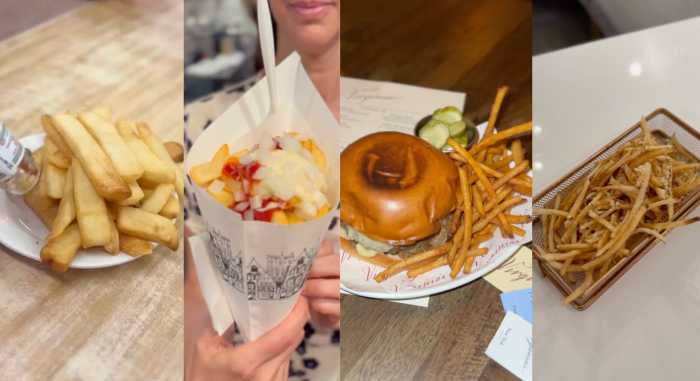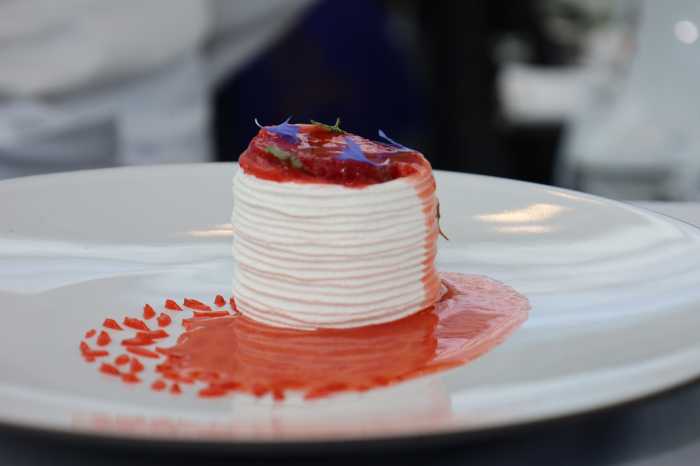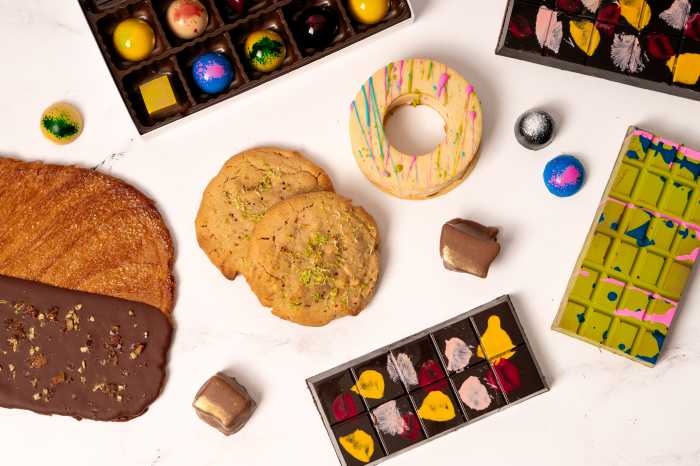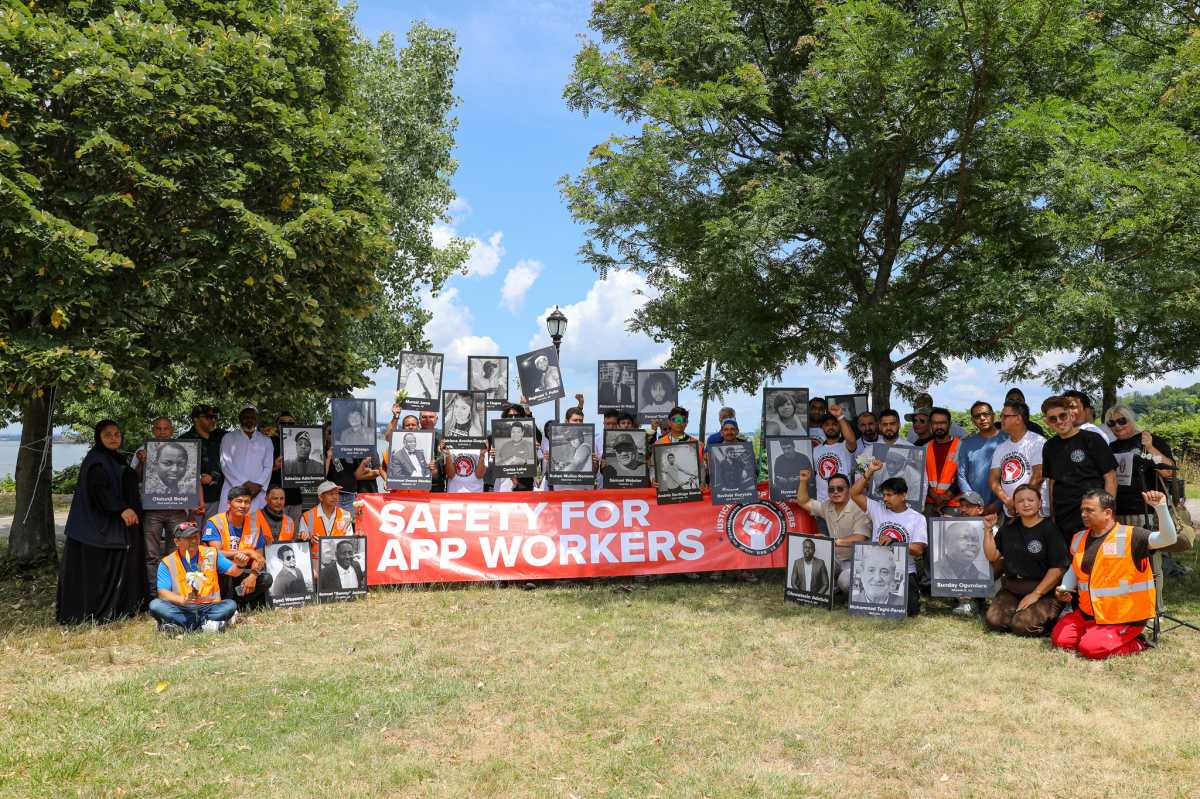With record-breaking high temperatures this week, there’s no doubt New York City has crossed the threshold from hot to iced coffee weather.
The popularity of iced coffee has climbed dramatically since 1995, when it made up 3 percent of summer coffee sales at La Colombe, a nationwide chain with eight cafés in the city. The chain’s iced coffee sales comprised a whopping 73 percent last summer.
“This is absolutely the ice age,” La Colombe co-founder Todd Carmichael said. “[Iced coffee] is the primary way of consuming coffee now.”
A variation called cold brew is the most popular summertime drink at all of Café Grumpy’s eight locations in Manhattan and Brooklyn, too, according to Elisha Nuchi, the company’s director of consumer packaged goods.
Café Grumpy was using a high-tech coffee maker to prepare its iced coffee when it opened its first cafe in Greenpoint in 2005; the company adopted the far less advanced method of making cold brew in 2011 and introduced a bottled version last summer, Nuchi said.
But what exactly is cold brew and why does it cost more than your average chilled coffee with ice?
We’ve explained everything about the iced drink taking over New York City:
How is cold brew prepared?
The secret to cold brew coffee is in its name. When you hit the power button on a coffee pot to prepare your morning cup of joe, you’re brewing hot coffee with water heated to a temperature that maximizes its ability to dissolve the solid compounds in coffee beans — somewhere between 195 to 205 degrees Farenheit, according to Caleb Ferguson, director of quality control at Joe Coffee. Cold brew beans, by contrast, are steeped in water at room temperature or colder.
“Cold brew coffee uses time rather than temperature to brew, so that’s the big change,” Carmichael said.
Chains like La Colombe and Joe Coffee will steep their grounds in tepid water for anywhere from 12 to 24 hours, then strain the liquid so you don’t have to drink your coffee the way the Turks do.
Why do people like it better than regular ol’ iced or hot coffee?
Cold brew has three main advantages, Carmichael argued. First of all, it has a higher caffeine concentration, and who doesn’t a enjoy a good caffeine buzz?
Cold brew also has a higher pH than hot java, which means it’s less acidic. That can provide some relief for coffee addicts with sensitive stomachs.
“If [hot coffee] affects your stomach, switch to the cold brew process,” Carmichael advised. “You’ll be absolutely amazed, because it doesn’t dissolve those acids that affect the stomach wall.”
Cold brew’s high pH offers another perk. Whereas liquids on the acidic end of the pH scale, like hot-brewed coffee, tend to deteriorate quickly, cold brew “is coffee that you can keep around for while.” It retains its original flavor — even after sitting for few days in your refrigerator or for a few hours on your desk at work.
That flavor amounts to more than the sweet notes of chocolate that tasters often describe. With a higher viscosity than hot coffee, cold brew “has this luxurious thickness to it that you don’t necessarily get with the hot coffee,” Carmichael said. “Us coffee geeks calls that ‘mouthfeel,’ and we love it.”
Do those cold brew detractors who argue that good coffee should be acidic have a point?
According to Carmichael, cold brew may be chemically less acidic than other forms of iced coffee, but it can still retain its “bright” notes.
“Acidity as a perceived flavor and acidity as the pH level of a drink are not always associated,” the coffee expert said.
Many brewers strive to “keep that perceived flavor of acidity, like lemon,” without the low pH, Carmichael said. “In this case, you can have your cake and eat it, too.”
Why is a cold brew coffee more expensive than a traditional iced coffee?
The answer is pretty straightforward: the coffee bean steeping process uses more coffee beans than other methods, Nuchi said. “That typically accounts for the higher retail price.”
At Café Grumpy, a cup of cold brew costs $4. At La Colombe, it’s $3.50.
Where can you buy it?
You can find cold brew on tap in coffee shops all over New York City, including Grumpy, Joe Coffee’s 14 shops in Manhattan and La Colombe’s eight outposts in Manhattan.
Café Grumpy also sells a line of plastic bottled cold brew, with and without milk, in its retail locations and at specialty grocery stores around the city.
“It’s a way to avoid the arduous task of making coffee in the morning,” Nuchi said.
La Colombe markets its plain cold brew, cold brew with milk and draft lattes in can form, for $3 a pop or $12 for a four-pack.
If you’re not as concerned with portability, you can buy your own beans to steep in water overnight. Joe Coffee advertises a $14 blend its website says is specifically designed for the cold brew process, with notes of chocolate, nuts and nougat.






































